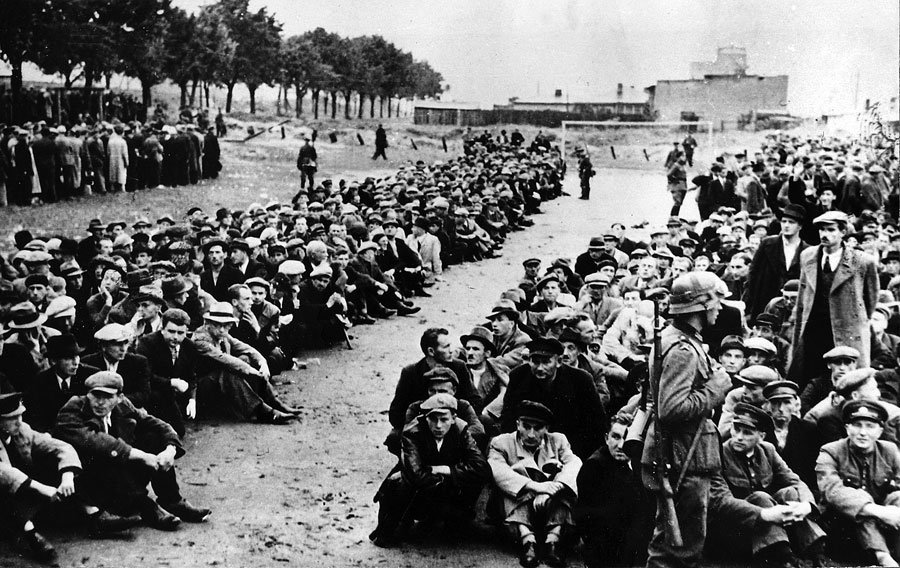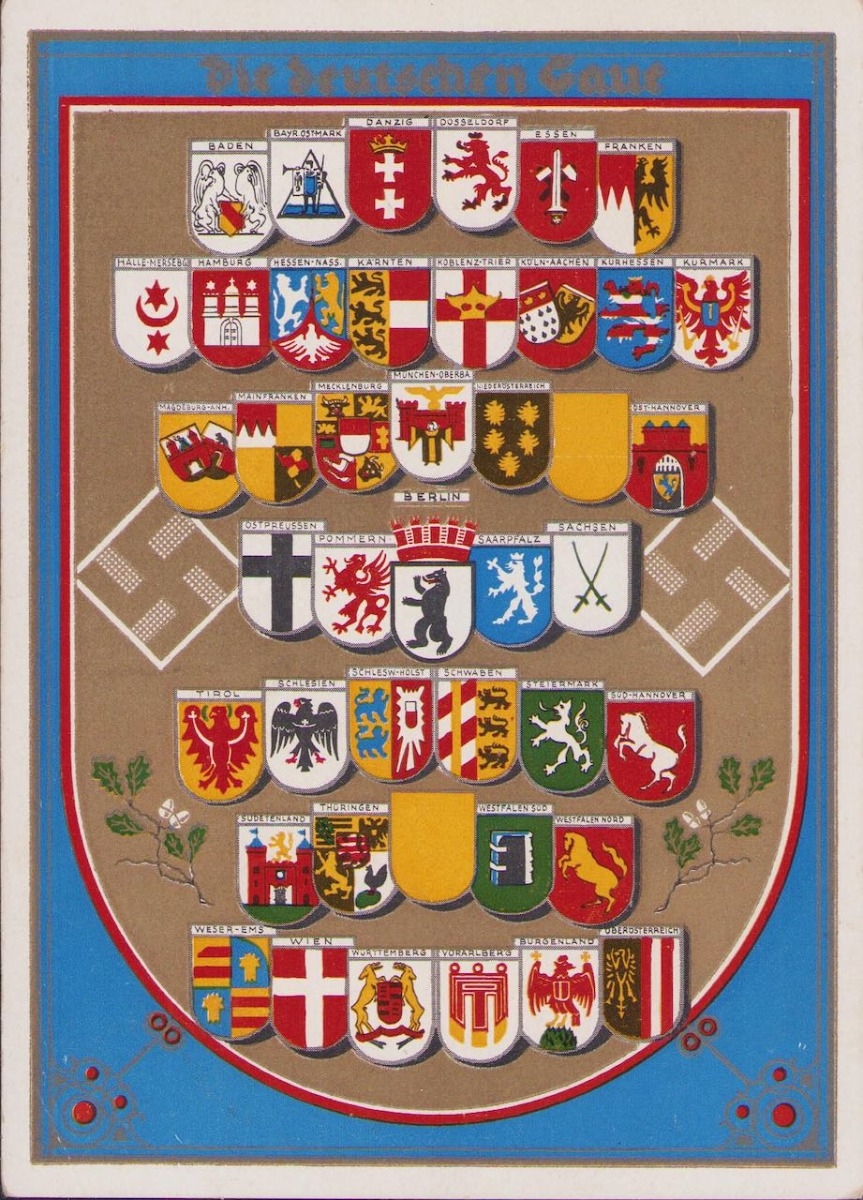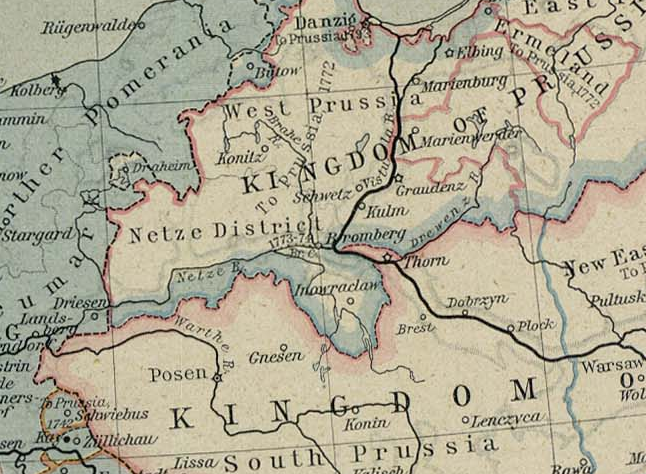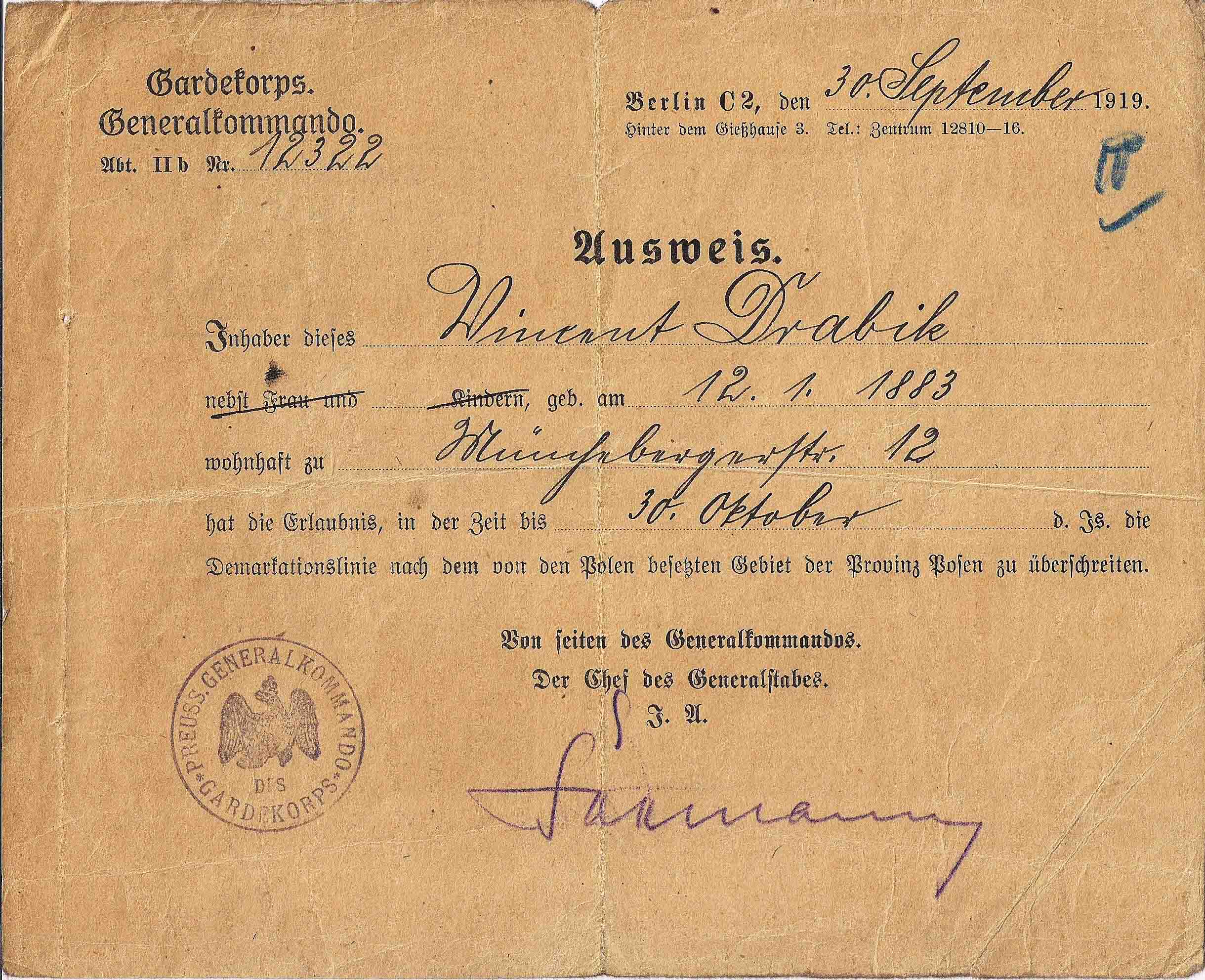|
Reichsgau Danzig-Westpreussen
Reichsgau Danzig-West Prussia (german: Reichsgau Danzig-Westpreußen) was an administrative division of Nazi Germany created on 8 October 1939 from annexed territory of the Free City of Danzig, the Greater Pomeranian Voivodship (Polish Corridor), and the ''Regierungsbezirk'' West Prussia of '' Gau'' East Prussia. Before 2 November 1939, the Reichsgau was called Reichsgau West Prussia. Though the name resembled that of the pre-1920 Prussian province of West Prussia, the territory was not identical. Unlike the former Prussian province, the ''Reichsgau'' included the Bromberg (Bydgoszcz) region in the south and lacked the ''Deutsch-Krone'' (Wałcz) region in the west. The province's capital was Danzig (Gdańsk), and its population without the city was (in 1939) 1,487,452. The province's area was 26,056 km2, 21,237 km2 of which was annexed Danzig and Pomeranian territory.Piotr Eberhardt, Jan Owsinski, ''Ethnic Groups and Population Changes in Twentieth-century Central-Ea ... [...More Info...] [...Related Items...] OR: [Wikipedia] [Google] [Baidu] |
Reichsgau
A (plural ) was an administrative subdivision created in a number of areas annexed by Nazi Germany between 1938 and 1945. Overview The term was formed from the words (realm, empire) and , the latter a deliberately medieval-sounding word with a meaning approximately equivalent to '' shire''. The were an attempt to resolve the administrative chaos resulting from the mutually overlapping jurisdictions and different boundaries of the NSDAP Party , placed under a Party , and the federal states, under a responsible to the Ministry of the Interior (in the Prussian provinces, the equivalent post was that of ). Interior Minister Wilhelm Frick had long desired to streamline the German administration, and the were the result: the borders of party and those of the federal states were to be identical, and the party also occupied the post of . Rival interests and the influence the wielded with Hitler prevented any reform from being undertaken in the " Old Reich" (german: Altreich), ... [...More Info...] [...Related Items...] OR: [Wikipedia] [Google] [Baidu] |
Wałcz
Wałcz (pronounced ; german: Deutsch Krone) is a county town in Wałcz County of the West Pomeranian Voivodeship in northwestern Poland. During the years 1975 to 1998, the city was administratively part of the Piła Voivodeship. Granted city rights in 1303, Wałcz has become the administrative, industrial and cultural center of the Wałcz Lake District with the city itself situated on the banks of the Raduń and Zamkowe lakes. Wałcz is located in the southwestern portion of West Pomeranian Voivodeship. The closest cities are Szczecin , Bydgoszcz , Piła , Poznań , Gorzów Wielkopolski and Koszalin . Historically, the town belonged to the province of Greater Poland and formed part of Poland until the Partitions of Poland. Afterwards, from 1772 to 1945 it was part of Prussia and, from 1871 to 1945, it was also part of Germany, before being reintegrated with Poland. Land use According to a report from 2002, Wałcz has an area of of which 41% is used for agriculture and 17% is ... [...More Info...] [...Related Items...] OR: [Wikipedia] [Google] [Baidu] |
Germany
Germany,, officially the Federal Republic of Germany, is a country in Central Europe. It is the second most populous country in Europe after Russia, and the most populous member state of the European Union. Germany is situated between the Baltic and North seas to the north, and the Alps to the south; it covers an area of , with a population of almost 84 million within its 16 constituent states. Germany borders Denmark to the north, Poland and the Czech Republic to the east, Austria and Switzerland to the south, and France, Luxembourg, Belgium, and the Netherlands to the west. The nation's capital and most populous city is Berlin and its financial centre is Frankfurt; the largest urban area is the Ruhr. Various Germanic tribes have inhabited the northern parts of modern Germany since classical antiquity. A region named Germania was documented before AD 100. In 962, the Kingdom of Germany formed the bulk of the Holy Roman Empire. During the 16th ce ... [...More Info...] [...Related Items...] OR: [Wikipedia] [Google] [Baidu] |
Nazis
Nazism ( ; german: Nazismus), the common name in English for National Socialism (german: Nationalsozialismus, ), is the far-right totalitarian political ideology and practices associated with Adolf Hitler and the Nazi Party (NSDAP) in Nazi Germany. During Hitler's rise to power in 1930s Europe, it was frequently referred to as Hitlerism (german: Hitlerfaschismus). The later related term "neo-Nazism" is applied to other far-right groups with similar ideas which formed after the Second World War. Nazism is a form of fascism, with disdain for liberal democracy and the parliamentary system. It incorporates a dictatorship, fervent antisemitism, anti-communism, scientific racism, and the use of eugenics into its creed. Its extreme nationalism originated in pan-Germanism and the ethno-nationalist '' Völkisch'' movement which had been a prominent aspect of German nationalism since the late 19th century, and it was strongly influenced by the paramilitary groups that emerged af ... [...More Info...] [...Related Items...] OR: [Wikipedia] [Google] [Baidu] |
Posen-West Prussia
The Frontier March of Posen-West Prussia (german: Grenzmark Posen-Westpreußen, pl, Marchia Graniczna Poznańsko-Zachodniopruska) was a province of Prussia from 1922 to 1938. Posen-West Prussia was established in 1922 as a province of the Free State of Prussia within Weimar Germany, formed from merging three remaining non-contiguous territories of Posen and West Prussia, which had lost the majority of their territory to the Second Polish Republic and Free City of Danzig in the Treaty of Versailles. From 1934, Posen-West Prussia was ''de facto'' ruled by Brandenburg until it was dissolved by Nazi Germany, effective 1 October 1938 and its territory divided between the Prussian provinces of Pomerania, Brandenburg and Silesia. Schneidemühl (present-day Piła) was the provincial capital. Today, the province is entirely contained within the modern state of Poland. Background Until the late 18th century partitions of Poland, the lands which made up Posen-West Prussia had been ... [...More Info...] [...Related Items...] OR: [Wikipedia] [Google] [Baidu] |
Province Of Posen
The Province of Posen (german: Provinz Posen, pl, Prowincja Poznańska) was a province of the Kingdom of Prussia from 1848 to 1920. Posen was established in 1848 following the Greater Poland Uprising as a successor to the Grand Duchy of Posen, which in turn was annexed by Prussia in 1815 from Napoleon's Duchy of Warsaw. It became part of the German Empire in 1871. After World War I, Posen was briefly part of the Free State of Prussia within Weimar Germany, but was dissolved in 1920 when most of its territory was ceded to the Second Polish Republic by the Treaty of Versailles, and the remaining German territory was later re-organized into Posen-West Prussia in 1922. Posen (present-day Poznań, Poland) was the provincial capital. Geography The land is mostly flat, drained by two major watershed systems; the Noteć (German: ''Netze'') in the north and the Warta (''Warthe'') in the center. Ice Age glaciers left moraine deposits and the land is speckled with hundreds of "finger l ... [...More Info...] [...Related Items...] OR: [Wikipedia] [Google] [Baidu] |
Districts Of Prussia
Prussian districts (german: Kreise, literally "circles") were administrative units in the former Kingdom of Prussia, part of the German Empire from 1871 to 1918, and its successor state, the Free State of Prussia, similar to a county or a shire. They were established in the course of the Stein-Hardenberg Reforms from 1815 to 1818 at an intermediate level, between the higher provinces and the government districts (''Regierungsbezirke''), and the lower municipal governments ('' Gemeinden''). Then part of a modern and highly effective public administration structure, they served as a model for the present-day districts of Germany In the aftermath of World War I, the Prussian districts of Eupen and Malmedy (Belgium) were annexed by Belgium in 1925, thereby causing the presence of a German-speaking minority. Administration After the Napoleonic Wars and the 1815 Congress of Vienna, the Prussian lands were re-arranged into ten provinces, three of them—East Prussia, West Prussia and ... [...More Info...] [...Related Items...] OR: [Wikipedia] [Google] [Baidu] |
Regierungsbezirk West Prussia
The West Prussia Region () was a government region (''Regierungsbezirk'') of Prussia from 1920 until 1939. The regional capital was Marienwerder in West Prussia (now Kwidzyn). It was the eastern part of Marienwerder Region which voted to be incorporated within the Weimar Republic and joined the Province of East Prussia from 1922 to 1939. It was replaced again by the reconstituted Marienwerder Region in 1939 until its dissolution in 1945. History As a result of the Treaty of Versailles following World War I, most of West Prussia, including much of the Marienwerder Region, was allocated to the Second Polish Republic. Parts of the territory east of the river Vistula took part in the East Prussian plebiscite and remained in the Free State of Prussia within Weimar Germany. These parts of the Marienwerder Region were officially incorporated into the Province of East Prussia in 1922, and renamed from Marienwerder Region to ''Region of West Prussia''. This smaller region consisted of the ... [...More Info...] [...Related Items...] OR: [Wikipedia] [Google] [Baidu] |
Province Of East Prussia
East Prussia ; german: Ostpreißen, label=Low Prussian; pl, Prusy Wschodnie; lt, Rytų Prūsija was a province of the Kingdom of Prussia from 1773 to 1829 and again from 1878 (with the Kingdom itself being part of the German Empire from 1871); following World War I it formed part of the Weimar Republic's Free State of Prussia, until 1945. Its capital city was Königsberg (present-day Kaliningrad). East Prussia was the main part of the region of Prussia along the southeastern Baltic Coast. The bulk of the ancestral lands of the Baltic Old Prussians were enclosed within East Prussia. During the 13th century, the native Prussians were conquered by the crusading Teutonic Knights. After the conquest the indigenous Balts were gradually converted to Christianity. Because of Germanization and colonisation over the following centuries, Germans became the dominant ethnic group, while Masurians and Lithuanians formed minorities. From the 13th century, East Prussia was part of the monas ... [...More Info...] [...Related Items...] OR: [Wikipedia] [Google] [Baidu] |
Pomeranian Voivodship
Pomeranian Voivodeship, Pomorskie Region, or Pomerania Province (Polish: ''Województwo pomorskie'' ; ( Kashubian: ''Pòmòrsczé wòjewództwò'' ), is a voivodeship, or province, in northwestern Poland. The provincial capital is Gdańsk. The voivodeship was established on January 1, 1999, out of the former voivodeships of Gdańsk, Elbląg and Słupsk, pursuant to the Polish local government reforms adopted in 1997. It is bordered by West Pomeranian Voivodeship to the west, Greater Poland and Kuyavian-Pomeranian Voivodeships to the south, Warmian-Masurian Voivodeship to the east, and the Baltic Sea to the north. It also shares a short land border with Russia (Kaliningrad Oblast), on the Vistula Spit. The voivodeship comprises most of Pomerelia (the easternmost part of historical Pomerania), as well as an area east of the Vistula River. The western part of the province, around Słupsk, belonged historically to Farther Pomerania. The central parts of the province belong to Pomerel ... [...More Info...] [...Related Items...] OR: [Wikipedia] [Google] [Baidu] |
Second Republic Of Poland
The Second Polish Republic, at the time officially known as the Republic of Poland, was a country in Central and Eastern Europe that existed between 1918 and 1939. The state was established on 6 November 1918, before the end of the First World War. The Second Republic ceased to exist in 1939, when Poland was invaded by Nazi Germany, the Soviet Union and the Slovak Republic, marking the beginning of the European theatre of the Second World War. In 1938, the Second Republic was the sixth largest country in Europe. According to the 1921 census, the number of inhabitants was 27.2 million. By 1939, just before the outbreak of World War II, this had grown to an estimated 35.1 million. Almost a third of the population came from minority groups: 13.9% Ruthenians; 10% Ashkenazi Jews; 3.1% Belarusians; 2.3% Germans and 3.4% Czechs and Lithuanians. At the same time, a significant number of ethnic Poles lived outside the country's borders. When, after several regional conflicts, the ... [...More Info...] [...Related Items...] OR: [Wikipedia] [Google] [Baidu] |
Treaty Of Versailles
The Treaty of Versailles (french: Traité de Versailles; german: Versailler Vertrag, ) was the most important of the peace treaties of World War I. It ended the state of war between Germany and the Allied Powers. It was signed on 28 June 1919 in the Palace of Versailles, exactly five years after the assassination of Archduke Franz Ferdinand, which led to the war. The other Central Powers on the German side signed separate treaties. Although the armistice of 11 November 1918 ended the actual fighting, it took six months of Allied negotiations at the Paris Peace Conference to conclude the peace treaty. The treaty was registered by the Secretariat of the League of Nations on 21 October 1919. Of the many provisions in the treaty, one of the most important and controversial was: "The Allied and Associated Governments affirm and Germany accepts the responsibility of Germany and her allies for causing all the loss and damage to which the Allied and Associated Governments and the ... [...More Info...] [...Related Items...] OR: [Wikipedia] [Google] [Baidu] |





.jpg)
.jpg)
